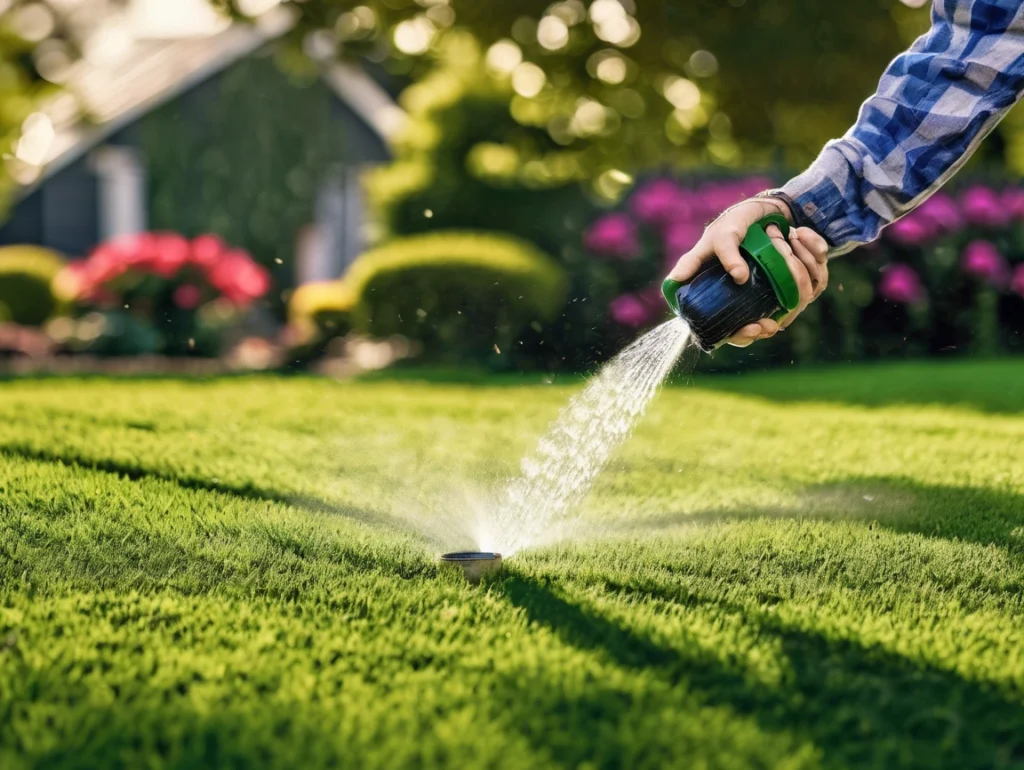Proper watering is critical to the health, survival, and beauty of your new landscape. Whether you’ve installed fresh plants or seeded a brand-new lawn, consistent and appropriate watering is the single most important factor for successful establishment. Newly planted landscapes and lawns are particularly vulnerable to water stress and require careful attention, especially during the first several weeks.

Essential Watering Tips for Your New Landscape and Lawn
Proper watering is critical to the health, survival, and beauty of your new landscape. Whether you’ve installed fresh plants or seeded a brand-new lawn, consistent and appropriate watering is the single most important factor for successful establishment. Newly planted landscapes and lawns are particularly vulnerable to water stress and require careful attention, especially during the first several weeks.
Watering Your New Landscape: Best Practices
After installing your new landscape, plants go through transplant shock caused by root disturbance, handling, and the sudden change in growing conditions. Your watering routine will make the difference between thriving plants and failed landscaping.
Key Watering Guidelines for New Plants:
Monitor Rainfall: If your area receives less than one inch of rain per week, supplement with deep watering every other day.
Check Soil Moisture: Stick your finger into the soil. If it feels dry to the touch, it’s time to water. If it’s still moist, wait another day.
Water Slowly and Deeply: Apply water gradually and in cycles to allow deep soil penetration without runoff.
Water Early in the Day: Morning is the best time to water. Evening watering can promote fungal growth, as foliage stays wet overnight.
Watch for Signs of Stress: Wilting, drooping leaves, or discoloration may indicate water stress. Lightly misting leaves can help revive struggling plants.
Seasonal Watering Needs: Plants require more water during active growth seasons (spring and summer) than during dormancy (fall and winter).
Dcepteur sint occaecat cupidatat non roident laboris nisi ut aliquip ex ea commodoonsequat Lorem ipsum dolor sit amet, consectetur adipisicing elit.
Seddo eiusmod tempor incididunt ut labore et dolore magna aliqua. Ut enim ad minim veniam, quis nostrud exercitation ullamco laboris nisi ut aliquip ex ea commodo consequat. Duis aute irure dolor in reprehenderit in voluptate velit esse cillum dolore eu fugiat nulla pariatur.
How to Water a New Lawn for Successful Establishment
Planting a new lawn is an investment—and proper watering ensures that investment pays off. A consistent watering schedule is essential for seed germination and early root development. Done right, your lawn will flourish. Done wrong, you may experience patchy growth and delays that require even more water and effort later.
Watering Tips for Newly Seeded Lawns:
Keep Soil Moist at the Surface: Grass seed must remain near the soil surface to germinate effectively. The top layer of soil dries quickly, especially in direct sun or wind, so moisture must be maintained consistently.
Frequent, Light Watering: For the first 3 weeks, water lightly once or twice daily to keep the top layer of soil moist. Focus especially on full-sun areas, slopes, and lawn edges, which dry out faster than shaded or level areas.
Avoid Missed Spots: Pay extra attention to edges, curbs, corners, and slopes—these areas are easy to overlook but dry out quickly.
If in Doubt—Water: When unsure, it’s safer to water than to risk letting young grass dry out.
Lawn Watering Schedule:
Weeks 1–3: Light, daily watering to keep the surface consistently moist.
Weeks 4–6: Begin deeper, less frequent watering—2 to 3 times per week—to encourage deeper root growth.
Additional Tips for New Lawns:
Water Early, Avoid Evenings: Early morning watering is best. Watering in the evening increases the risk of disease due to prolonged leaf moisture.
Start Mowing Promptly: Begin mowing as soon as the grass reaches a mowable height. Use a bagging mower to remove clippings, and clean the mower frequently—young grass can clog blades.
Straw Mulch: If straw was used for seed protection, you can leave it in place as long as it’s not smothering the seedlings.
Fall Leaf Maintenance: Keep leaves off the lawn to prevent sunlight and moisture blockage and avoid suffocating new grass.
Spot-Seed as Needed: After 3–6 weeks, inspect for bare or thin patches. Reseed as necessary and continue your watering routine.
By following these professional lawn and landscape watering tips, you’ll set your new plants and turf on the path to long-term health and beauty. For more landscape maintenance tips or seasonal care advice, contact us today.
Dcepteur sint occaecat cupidatat non roident laboris nisi ut aliquip ex ea commodoonsequat Lorem ipsum dolor sit amet, consectetur adipisicing elit.
Seddo eiusmod tempor incididunt ut labore et dolore magna aliqua. Ut enim ad minim veniam, quis nostrud exercitation ullamco laboris nisi ut aliquip ex ea commodo consequat. Duis aute irure dolor in reprehenderit in voluptate velit esse cillum dolore eu fugiat nulla pariatur.

